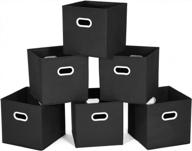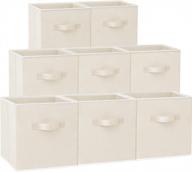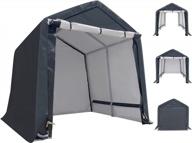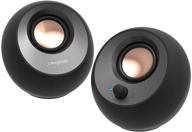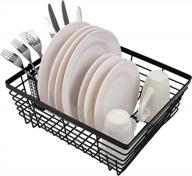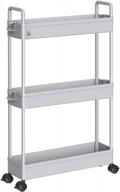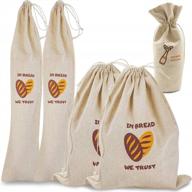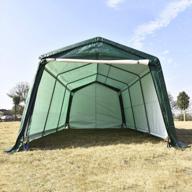Protect Your Vehicle from the Elements
Exposure to the elements can take a major toll on your vehicle over time. Rain, snow, UV rays, and other environmental factors slowly degrade your car's exterior and interior. Investing in a carport is one of the best ways to protect your vehicle from weather damage.
Another interesting products
Benefits of a Carport
- Shields your car from rain, snow, hail, and other precipitation
- Provides shade to prevent sun damage and overheating on hot days
- Minimizes tree sap, bird droppings, and other outdoor contaminants
- Keeps snow and ice from building up on windshield and hood
- Reduces oxidation and rust caused by moisture
- Helps interior stay cleaner and cooler in summer months
By parking under a carport, you can keep your vehicle looking its best while potentially extending its lifespan.
Types of Carports
There are several types of carports to choose from:
| Carport Type | Description |
|---|---|
| Permanent | Fixed, long-term metal or wood carport attached to home |
| Portable | Temporary steel or metal carport that can be moved |
| Lean-To | Metal roof that leans against the house or garage |
| Freestanding | Detached structure built in yard or driveway |
Consider how much protection, convenience, aesthetics and permanence you need when selecting a carport type.
Ideal Carport Size
Make sure your carport is sized appropriately for your needs. Measure your vehicle's length and height to ensure enough clearance. Most carports are 10-12 feet wide and 12-20 feet long. Allow an extra 1-2 feet on all sides for entry/exit. For multiple vehicles, make the structure long enough to fit all cars with room in between.
Carport Material Options
Carports come in a variety of different building materials:
- Steel - Most affordable and durable option. Withstands all weather conditions. Can be painted to match home.
- Aluminum - Lightweight and corrosion resistant. A bit more expensive than steel.
- Wood - Provides a rustic, natural look. Requires more maintenance to protect from elements.
- Plastic/Resin - Lower maintenance than wood but more expensive. Won't rust or rot.
Consult local regulations, as some materials like plastic or canvas may not meet wind load requirements in certain areas. The location of your carport will also impact the ideal construction material.
Top products in 🚗 Carports
Enhance Your Carport
Optional upgrades like lighting, vehicle charging stations and storage can make your carport even more useful.
- Add LED lights for visibility when accessing your vehicle at night.
- Install solar panels on the roof to generate clean electricity.
- Incorporate cabinets or shelving for keeping automotive supplies handy.
- Use side panels to fully enclose the carport into a garage if desired.
With the right carport design, you can protect your prized vehicle from the elements while also gaining extra storage and functionality.
Protect Your Vehicle by Parking Under a Carport
Every time you leave your vehicle parked outside, it is exposed to various environmental elements that can gradually degrade its condition over time. Parking under a covered carport can help shield your car from weather damage and keep it looking its best.
Similar products
Rain and Snow
Precipitation like rain, sleet, hail and snow can be detrimental to your car's exterior. Water spots, paint oxidation and rust can form on the body from moisture exposure. The metal, rubber and plastic components can also deteriorate more rapidly. And snow/ice buildup on the windshields is a nuisance you won't have to deal with under a carport.
UV Rays
The sun's harsh ultraviolet rays bleach and fade exterior paint, crack dashboard materials and deteriorate rubber seals around windows and doors. Interior surfaces like seats also fade more quickly. Parking under a carport provides valuable shade and UV protection.
Bird Droppings and Tree Sap
Parking under trees may provide some shade but increases exposure to bird droppings, sap, leaves and other debris. These contaminants can damage the paint finish and be difficult to remove if left for long. A carport allows you to avoid this nuisance.
Temperature Extremes
During hot summer months, the interior of a vehicle can reach extremely high temperatures, which accelerates wear on surfaces and materials. In winter, the inside of an unprotected car gets extremely cold and takes longer to warm up. Keeping your vehicle covered helps maintain more moderate temperatures.
Dust and Pollen
Uncovered vehicles are bombarded by dust, dirt and pollen, which soils the exterior paint. Dust also manages to enter the interior, dirtying upholstery and surfaces. Reducing exposure helps keep your car cleaner between washes.
Why a Carport is Better Than a Garage
A covered carport provides most of the major benefits of parking in a garage without the higher cost. Also unlike garages:
- Carports allow for maximum airflow and ventilation to prevent condensation and moisture buildup.
- Open design reduces exhaust fumes lingering around the vehicle.
- Provides easier drive-through access without the need for a garage door.
Investing in a carport is an affordable way to protect your valuable vehicle from the elements and keep it looking great for years to come.
Types of Carports
If you're looking to build or install a carport, there are several design types to consider including permanent, portable, lean-to and freestanding:
Permanent Carports
Permanent carports are fixed structures made from metal, wood or other durable materials. They are attached directly to a home's wall or roofline and require professional installation for proper structural attachment.
Benefits of permanent carports include:
- Custom design to match home's aesthetics and architecture
- Provides strongest protection from wind, rain and other elements
- Greater stability and durability from secured installation
Downsides are higher cost and loss of parking space if ever removed.
Portable Carports
Portable carports are temporary structures that can be set up as needed and moved to different locations. They are typically constructed from tubular steel frames with water-resistant fabric roof coverings.
Advantages of portable carports:
- Lower cost than permanent structures
- Quick and easy "do-it-yourself" installation
- Can be folded up and stored away when not needed
- Moveable to alternate parking spots or locations
Limitations are lesser durability and stability than permanent options.
Lean-To Carports
Lean-to carports feature a single-pitched metal roof that runs down to a wall of an existing structure like a home or garage. The adjoining building provides one side's support and protection.
Lean-to carport pros:
- Less expensive than a freestanding structure
- Provides good coverage from the elements
- Usually easy for DIY construction
Cons are limited covered parking space and still requires some building expertise.
Freestanding Carports
Freestanding carports are separate structures installed away from the home, such as in a yard or driveway. They have a roof supported by multiple posts anchored in the ground.
Benefits of freestanding carports:
- Do not require attachment to home
- Flexible placement options
- Can accommodate more vehicles
Downside is lack of adjoining wall protection requiring sturdy construction.
Consider your parking needs, budget, and installation requirements when choosing a carport type.
Overview of Main Carport Types
When considering installing a carport, there are four primary design types to evaluate - permanent, portable, lean-to and freestanding. Each has their own pros and cons to factor in your decision.
Permanent Carports
Permanent carports are fixed structures securely attached to a home's exterior wall or roof. They are usually custom built from wood, metal or other robust materials to match the aesthetics of the house.
Pros of permanent carports:
- Provide strongest protection from weather due to sturdy construction
- Can be painted to blend seamlessly with home design
- Offers covered access directly from exterior door
- Increased stability from direct attachment to dwelling
Cons are higher cost and permanent loss of parking spot if ever removed.
Portable Carports
Portable carports are temporary shelters with metal pole frames and waterproof fabric roof covers. They can quickly be set up and taken down as needed.
Benefits of portable carports:
- Lower cost than permanent structures
- Easy "do-it-yourself" installation without tools
- Mobility to move between locations as needed
- Adjust sizing by adding or removing sections
Limitations are less stability and shorter lifespan than permanent options.
Lean-To Carports
Lean-to carports feature a single sloped roof extending from the wall of an existing building, like a home or garage. One side gets anchored to the structure.
Lean-to carport advantages:
- Less expensive than freestanding structure
- Provides good weather protection
- Easy for do-it-yourselfers to build
Downside is limited covered space against the building.
Freestanding Carports
Freestanding carports are detached, standalone structures installed in a yard or driveway. The roof has multiple beams supported by posts embedded in the ground.
Pros of freestanding carports:
- Do not require attachment to home
- Flexible placement in yard or driveway
- Accommodate more vehicles in a row
Challenges are needing sturdy construction without adjoining walls.
Consider your parking needs, budget, location and installment skills when selecting a carport type.
Carport Materials
When constructing or purchasing a carport, four common materials to choose from are metal, wood, canvas and polycarbonate. Each has their own advantages and considerations for performance, cost and appearance.
Metal
Metal, usually steel or aluminum, is the most popular choice for carports. Benefits include:
- Affordable compared to other materials
- Extremely durable and weather resistant
- Low maintenance as it won't rot or warp
- Customizable with paint finishes
Potential downsides are heat transfer in very hot/cold climates and risk of rust if untreated steel is used.
Wood
Wood carports provide a classic, rustic look. Pros of wood include:
- Natural aesthetic appeal
- Easy to work with using standard tools
- Less heat transfer than metal
- Readily available pressure-treated varieties resist rot and insects
Drawbacks are needing regular staining/sealing, less durability than metal and not ideal in very wet climates.
Canvas
Canvas carports use a durable, water-repellent fabric stretched over a metal frame. Benefits include:
- Very affordable cost
- Easy to assemble temporary shelters
- Portable and removable
- Weighs less than solid materials
Limitations are less weather resistance, tear risks and shorter lifespan than other options.
Polycarbonate
Polycarbonate sheets provide transparency like glass with greater impact resistance. Pros:
- Lets light through while blocking UV rays
- Durable and weatherproof
- Insulates against heat/cold better than metal or canvas
- Resists shattering
Cons are higher cost and the need for specialized installation.
Consider how each material meets your needs for budget, durability, and aesthetics in your climate.
Common Carport Materials
When constructing or purchasing a carport, there are four main materials to evaluate - metal, wood, canvas and polycarbonate. Each has their own pros, cons and considerations.
Metal
Metal is one of the most popular choices for carports. Steel and aluminum are most common:
- Steel - Very strong and durable but can rust if not galvanized or painted. Most affordable metal option.
- Aluminum - More expensive but naturally rust-resistant. Weighs less than steel.
Benefits of metal:
- Durable in all weather conditions
- Low maintenance
- Customizable with paint finishes
Downsides are heat conduction and potential for rust (steel only).
Wood
Wood carports provide a classic, natural look. Cedar and pressure-treated pine are common woods used.
Benefits of wood:
- Aesthetically pleasing
- Easy to work with standard tools
- Good insulator
Drawbacks are regular maintenance staining/sealing needed and less durable than metal.
Canvas
Canvas carports use woven fabric like polyester stretched over a frame.
Pros of canvas:
- Very inexpensive
- Easy to assemble
- Portable
Cons are less durable than solid materials and tear risks.
Polycarbonate
Polycarbonate is a durable transparent plastic sheet.
Benefits of polycarbonate:
- Lets light through while blocking UV rays
- Durable and weatherproof
- Good insulation
Limitations are higher cost and specialized installation needs.
Consider cost, appearance, climate and needs when selecting carport materials.
How to Use Amazon Prime to Buy Carports
One of the many benefits of an Amazon Prime membership is access to a huge selection of carports with fast, free shipping. Here are some tips for using Amazon Prime to purchase temporary or permanent carports for your home or business.
Browse the Carport Store
Amazon has an entire section dedicated to carports and canopies. Here you can browse and compare different types like pop-up canopies, portable garages, metal carports, permanent structures and garage-in-a-box kits. Use the filtering tools to narrow down your options.
Look for Prime Eligible Options
Make sure to check for the Prime tag on carport listings to ensure they are eligible for the Prime shipping benefits. This includes access to fast, free 2-day shipping on most items. Prime products are also eligible for Prime Try Before You Buy for clothing items.
Compare Features
Pay close attention to the details like dimensions, materials, frames, anchoring, and extra features. Look for carports made of durable and rust-resistant materials suited for your climate. Make sure the size accommodates your vehicle, with ample clearance.
Read Reviews
Reading buyer reviews can provide valuable insights into the true quality, durability, and ease of assembly of the carport before purchasing. This will help you determine if it is worth the investment.
Check Seller Ratings
For third-party sellers, be sure to check their ratings and reputation for good customer service. Issues with unclear instructions, missing parts or damaged packaging will be easier to resolve with reputable sellers.
Compare Pricing
Even with Prime shipping benefits, compare the total price against other retailers to ensure you are getting the best deal. Use CamelCamelCamel to view price history on Amazon.
With ample selection and fast free delivery, an Amazon Prime membership can be a great way to purchase a quality carport without leaving home.
Workshop Storage Ideas
Here are some workshop storage ideas:
- Use pegboards to hang tools and supplies for easy access and organization.
- Install shelves and cabinets to store larger items and keep them off the floor.
- Utilize stackable storage bins to keep smaller items organized and easily accessible.
- Hang magnetic strips to store metal tools and keep them within reach.
- Create a designated workbench area with built-in storage for frequently used tools and supplies.
- Use a rolling tool cart to keep frequently used tools and supplies nearby and easily transportable.
These ideas can help maximize space and organization in a workshop, making it easier to find and access tools and supplies when needed.
Mckinsey Customer Experience Pdf
McKinsey & Company is a global management consulting firm that provides advice on strategic management to corporations, governments, and other organizations. The company has published several reports and articles on customer experience. Here are some of the PDFs that can be found on their website:
- "Customer experience: Creating value through transforming customer journeys"
- "The CEO guide to customer experience"
- "The role of customer care in a customer experience transformation"
- "Linking the customer experience to value"
- "Putting customer experience at the heart of next-generation operating models"
- "From Moments to Journeys: A Paradigm Shift in Customer Experience Excellence"
These PDFs cover a range of topics related to customer experience, including creating value through transforming customer journeys, improving customer satisfaction, and linking customer experience to business outcomes. They also provide insights on how to design and start up a customer-experience transformation, how to put customer experience at the heart of next-generation operating models, and how to shift from moments to journeys in customer experience excellence.
Why Customer Experience Matters Mckinsey?
According to McKinsey, customer experience (CX) is of paramount importance to all types of organizations, from businesses to government entities, schools, or hospitals. Understanding the customer journey is about learning what customers experience from the moment they begin considering a purchase, and then working to make the journey toward buying a product or service as simple, clear, and efficient as possible. Not only is customer experience the right thing to do for customers, but it also results in 3x returns to shareholders. Companies that effectively organize and manage customer experience can realize a 20 percent improvement in customer satisfaction, a 15 percent increase in sales conversion, a 30 percent lower cost-to-serve, and a 30 percent increase in employee engagement. The future of superior customer-experience performance is moving to data-driven, predictive systems, and competitive advantages are in store for companies that can harness predictive insights to connect more closely with their customers, anticipate behaviors, and identify CX issues and opportunities in real-time. Customer experience is fundamentally a cross-functional problem, and most great companies have done well over time by getting functionally excellent. Customer experience actually cuts across those, and customers don't care who's in finance department or who's in marketing or who's in operations, right? They see their journeys. They need to accomplish stuff. They need to set up that account. They need to get an issue resolved.






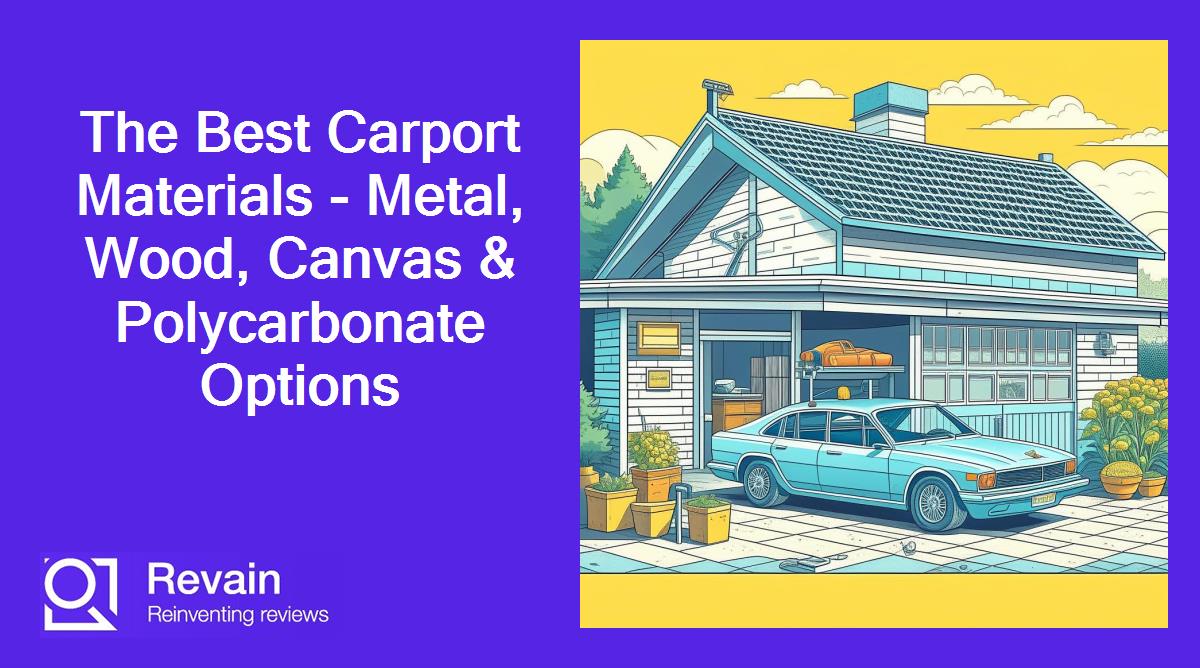
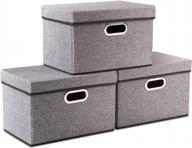

![terraking leaf bag xl - heavy duty material collection system for ride-on lawnmowers - fast & easy leaf collection with nylon bottom (fits 3-bag hood) [st95033] logo](https://images.revain.org/blob/rog5xubi_5b5cf8d428@128x128.jpg)
